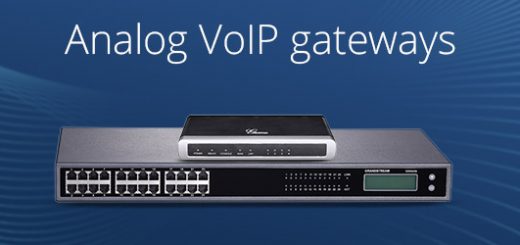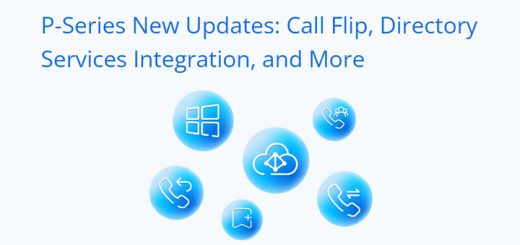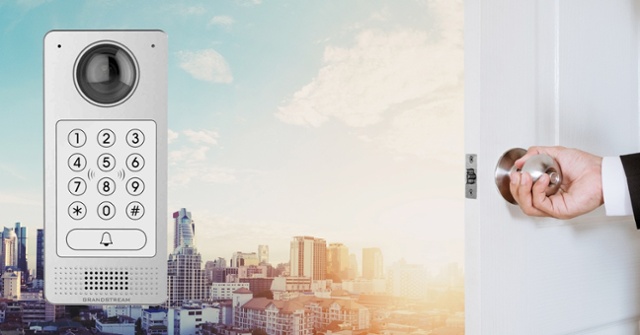What is Kari’s Law?
Posted by: Kim Gunn, Marketing Communications Specialist on Apr 22, 2020
This blog was originally posted on Grandstream.com
On February 16, 2020 Kari’s law and RAY BAUM’s Act went into effect. This law was passed in direct response to the tragic loss of Kari Hunt Dunn. During Kari’s attack, Dunn’s 9 year old daughter repeatedly tried to call 911 and was unsuccessful in reaching emergency services due to not knowing she had to dial “9” to reach an outside line before calling 9-1-1. This led to the implementation of a law that ensures public safety and the ability to dial 911 easily from any service. At Grandstream, we believe that all our customers should feel safe and have easy access to emergency services. Providing a communication solution to our customers that is compliant with this law is important to us. The law/act state the following:
Kari’s Law: Kari’s Law applies to MLTS, which are telephone systems that serve consumers in environments such as office buildings, campuses, and hotels. Kari’s Law requires MLTS systems in the United States to enable users to dial 911 directly, without having to dial a prefix to reach an outside line, and to provide for notification (e.g., to a front desk or security office) when a 911 call is made.
RAY BAUM’s Act: requires the Commission to conduct a rulemaking proceeding to consider adopting rules to ensure that “dispatchable location” is conveyed with 911 calls, regardless of the technological platform used, so that 911 call centers will receive the caller’s location automatically and can dispatch responders more quickly. “Dispatchable location” is defined as “the street address of the calling party, and additional information such as room number, floor number, or similar information necessary to adequately identify the location of the calling party.”

How is Grandstream compliant with Kari’s Law and RAY BAUM’s Act?
In critical situations, having the ability to make emergency calls to ask for help is a must for any telephony system whether it’s a public or private telephony system. As a requirement per the law, callers must be directly connected to public safety services without going through an operator or a receptionist and there must not be any required prefix for emergency numbers. Users should upgrade their UCM firmware version to 1.0.20.23 for the UCM6200 series and UCM6510, and 1.0.18.18 for UCM6100 series models to support all features as mandated by Kari’s law.
Grandstream’s enterprise-grade IP-PBX provides clients with the ability to make these types of calls when dealing with critical situations to easily make emergency calls for help. These calls need to have higher priority than regular calls, and can be categorized depending on the emergency service called and the ongoing situation, as well as the possibility to notify related personal about the situation (guards, first aid etc.). The UCM series enables the administrator with all the tools necessary to configure and adapt the PBX with such situations.
The UCM also supports configuration and management of numbers and outbound routes used in emergency situations. Outbound calls can be set to bypass the regular outbound call routing process and dial out for emergency help through redundant trunks in the event all lines are busy or down. The UCM series supports 3 types of notifications: call notifications (voice notification) with screen display (visual alert) of the extension that initiated the emergency call, instant email notification (once the emergency number is dialed), and email notification with call recording attached. When someone dials an emergency call (ex: 911) a notification call will be sent to an internal user, such as a front desk attendant, so they are aware of the current situation. Emergency calls can now be automatically recorded by toggling on the new Auto Record feature and recordings can be viewed in the new Emergency Recordings tab on the same page. Additionally, users can have these recordings sent to an email address(es).
is a feature added to the latest firmware of the UCM series, which is useful when you have a UCM managing a location with multiple buildings or floors that require unique emergency location identification numbers or addresses. Also, emergency dispatchers can use the emergency location mapping to contact the caller in case he or she disconnects prematurely. To use this feature, the emergency response location must be defined for each building and floor and must be uploaded to the public safety services database. In other words, users must supply public safety services with the emergency CIDs and their associated ERL, which they can arrange through their carrier or service provider. The carrier or service provider can help map a physical address for each CID so they become available to the public safety dispatcher.
What does this mean for existing UCM users?
Current Grandstream UCM customers can upgrade their firmware to become fully compliant. If you have not already upgraded your systems firmware, please do so as soon as possible. To find the latest firmware for your device head over to our Upgrade Firmware page HERE.
Check out our latest YouTube video about Kari’s Law:







